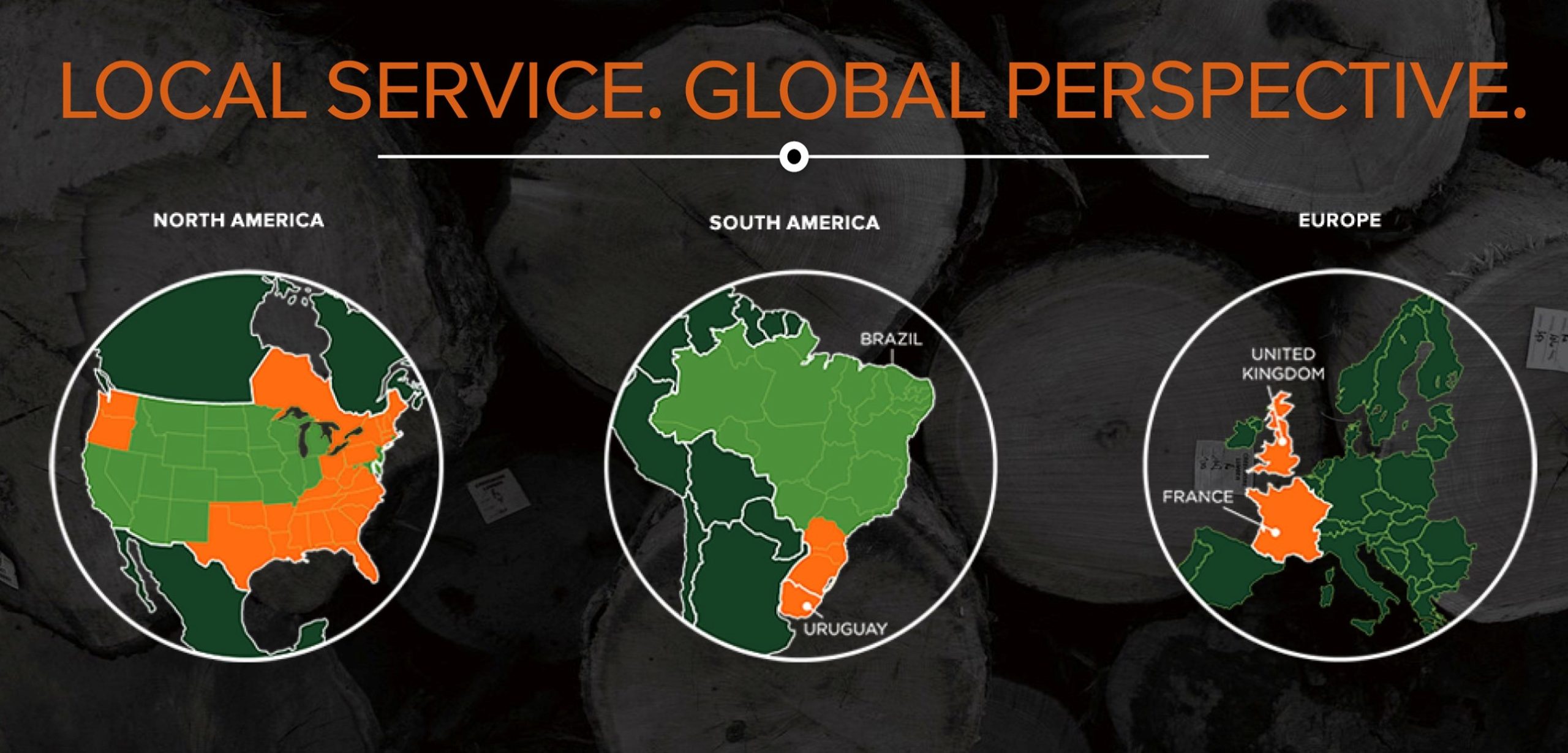
Why Tactical Optimization Matters, Even When Forestry Plans Change
Tactical optimization isn’t about creating a rigid plan—it’s about equipping your team with intelligent decision support that improves resilience, agility, and profitability.
Remsoft Global Forestry Conference — Montreal, QC – March 24-26, 2026 Register Now>
Forest Management System
Forest Inventory Data Collection, Analysis & Reporting
Lidar Forest Inventory Mapping & Analysis
Harvester/Processor File Transfer Solution
Forest Operations Management
Forest Machine Telematics Solution
Digital Load Slip Solution
MRO Parts Inventory Management
Forest Planning Optimization
Forestry Sales Planning and Operational Scheduling
Integrated Harvest, Roads and Wood Flow Planning
Forest and Sustainability Management Planning
Forest Management System
Forest Inventory Data Collection, Analysis & Reporting
Lidar Forest Inventory Mapping & Analysis
Harvester/Processor File Transfer Solution
Forest Operations Management
Forest Machine Telematics Solution
Digital Load Slip Solution
MRO Parts Inventory Management
Forest Planning Optimization
Forestry Sales Planning and Operational Scheduling
Integrated Harvest, Roads and Wood Flow Planning
Forest and Sustainability Management Planning

Tactical optimization isn’t about creating a rigid plan—it’s about equipping your team with intelligent decision support that improves resilience, agility, and profitability.

Mathematical optimization can bring a new level of intelligence to forest management, offering a robust method for balancing the complex interplay of timber revenue, carbon management, and ESG objectives.

Remsoft’s new BI Reporting capabilities are a big step forward for forest operations planning and scheduling. By leveraging these tools, you can enhance your data analysis, make more informed decisions, and ultimately, maximize your business value.

Leveraging their existing data for intelligence, forest managers can use optimization techniques to navigate the balance between ecological preservation and financial returns, assess carbon potential and find the optimal strategy in asset management.

In a world where forests are more than timber suppliers, getting Intensive Forest Management right could unlock new growth opportunities and pave the way for a sustainable, profitable future in forestry.

A review of 3 key trends that are gaining momentum in forestry – supply chain transformation, carbon and climate change, and data-driven forestry planning – with highlights from our most-read Forest Intelligence stories.

For foresters considering a carbon project, optimization technology can make the process – from project management to balancing other uses to harvesting regimes and carbon registry methodologies – simpler and more efficient.

Using intelligence technologies, such as operational analytics, optimization modeling and machine learning, foresters can ensure climate mitigation options are well planned, sustainable, and appropriately implemented.

Strategic planning is the first and most important step in the development of any forest management plan. Here’s how you can take advantage of the latest optimization advances to modernize your strategic model and sharpen long-term planning.

While the complexity of forestry presents a multitude of management challenges, it also makes forestry operations an ideal fit for data analytics and planning optimization. Using data analytics, foresters are finding hidden opportunities for improvement and innovating to stay ahead of the curve and be cost competitive.

Using Remsoft’s optimization technology, carbon modeler James Steenberg can go beyond measuring carbon and examine the trade-offs between carbon storage and other ecological and socio-economic indicators.

With forestry planning and supply chain management powered by data intelligence, there is a rare opportunity to optimize almost every aspect of forest operations. In this article, we look at five strategies to leverage digital intelligence and do more with more data.

Remsoft’s unique approach to optimization modeling meets today’s need for connected planning. Combining a standardized database with modeling platform integration, we bridge the gap between the data source and model to improve planning efficiency and maximize data insights.

Researchers at the University of Toronto are exploring the available wood supply to support a new mass timber industry in Ontario with the help of Remsoft optimization modeling technology.

When it comes to using optimization modeling techniques, it’s important to assess your business drivers and business values before diving into the technology and the data.

AI/ML offers a compelling complement to mathematical optimization modeling and can enhance the existing best practices already used in enterprise forestry.

There is significant and growing potential in carbon management and a tremendous amount of complexity and risk. This complexity makes carbon forestry an ideal fit for optimization modeling which provides an efficient, repeatable, and scalable solution for forest carbon project development and evaluation.

With a focus on maximizing efficiency and forest resource sustainability, Alberta-Pacific Forest Industries Inc. (Al-Pac) is using Remsoft optimization technology to improve tactical harvest scheduling and wood flow across its North American operations.

Optimizing mid-level and operational planning are among the biggest missed opportunities to improve performance within the forestry sector. By adding rigor to planning in the middle, with optimization modeling, you can uncover cost savings and business opportunities that would otherwise be impossible to see.

There are many variables that can impact the performance of your optimization models. Gain insights from your model faster by applying these best practices.

The complexities of the forestry industry are an untapped opportunity for transformative AI analytics. Learn why and what Remsoft has planned for AI-enabled capabilities.

With Woodstock’s Crew Movement feature you can account for movement costs between blocks to improve crew assignment and movement decisions and minimize costs. Learn how it works.

Optimization modeling offers a holistic approach to asset valuation that’s efficient, repeatable, and effective whether you’re evaluating an existing property or a potential land acquisition.

A templated approach for creating custom harvest models improved annual harvest planning efficiency, and provided downstream benefits for Idaho Department of Lands when updating models post-implementation.

Navigating the complexities of wood supply modeling, and why optimization techniques like wood basket analysis are more important than ever to adapt and thrive within today’s changing economy.

Learn about three common causes of infeasibilities in your Woodstock optimization model and how to address them.

Analytics models are widely employed in business and run the gamut of applications from data mining and classification models to predictive and prescriptive models. For optimal performance, learn when you should review your model and why it’s important.

Discounting costs and revenues often drive the objective function of forest growth and yield modeling. In this post we look at why discounting is important, and how to choose your discount rate wisely.

Using the optimization potential of Remsoft Woodstock, the Australian Capital Territory Parks and Conservation Service (ACT PCS) developed improved prescribed burn programs for their 10-year Regional Fire Management Plan.

By optimizing your forest and road assets within the same model, you can easily weigh the benefits of reducing transportation costs – and increasing the net value of your wood – against the capital cost of investing in road infrastructure.

With a changing climate comes the need for changing forest management strategies. Researchers at University College Dublin are exploring what climate change means for future forest management.

Using GIS and optimization analytics, the Washington State Department of Natural Resources was able to earn more money in the short term and create a more suitable northern spotted owl habitat in the long term.

As more technologies are adopted across the industry, connectivity is becoming increasingly important. Improved transparency and collaboration in the forest planning process are helping to increase efficiency and accuracy.

Latvia’s State Forests, a European forest association, modeled their entire, complex supply chain to gain deeper financial insight and information that allowed them to make more informed and better contract negotiations.

Coillte introduced collaborative technology to their field foresters to demonstrate the feasibility of their strategic model results. They operationalized scheduling for a large and scattered land base by creating a spatially coherent, tactical-level harvest plan from their long-term schedule.

Supporting every aspect of timberland ownership, F&W Forestry Services used Remsoft technology to manage over two million acres in six countries, running optimization across ownerships in the United States, Brazil, Uruguay, and other areas of the world.

Get our brief with articles on using analytics, AI and business intelligence for forest management planning.